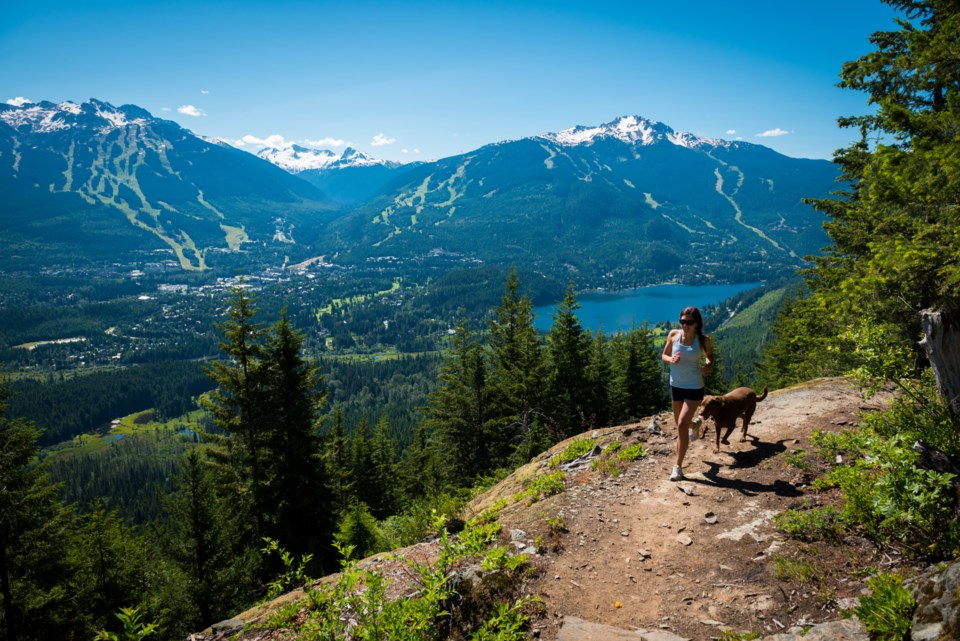As the Resort Municipality of Whistler (RMOW) formalizes a new Parks and Valley Trail Strategy, residents and guests to the resort are invited to weigh in by way of an online survey.
The strategy will guide the future of Whistler’s parks and Valley Trail over the next 10 years.
“It will consider local and regional demographic forecasts, Smart Tourism principles, as well as local, regional, provincial and national park trends,” reads the project page on the RMOW’s website.
“The Strategy will be founded on topics of climate change, ecological integrity and stewardship, equity, diversity and inclusion, First Nations reconciliation, ageing infrastructure, and current fiscal realities. The Strategy will define the direction, philosophy, policies, and actions and create a framework for future decisions.”
Residents and guests to the resort can learn more and take the survey at engage.whistler.ca/park-and-valley-trail-strategy.
Manager of parks planning Martin Pardoe was on hand for the June 24 committee of the whole meeting to present a related initiative in the Recreation Trails Strategy (RTS).
“You may recall back prior to the pandemic, and in the early days of the pandemic, there was a lot of concerns about trails in our community … things about lack of transparency with how trail planning occurs, there were environmental and wildlife concerns, parking and access were an issue,” Pardoe said.
All that in mind, RMOW staff decided to “take a breath” and consider it all under one project umbrella.
“So the purpose of the rec trail strategy is to respond to feedback from the community about various trail-related issues; to elevate the community’s general knowledge regarding the trail ecosystem, if I can call it that, in Whistler; provide direction and guidance around common friction points, and how can we move forward on these items; and provide the basis for a future comprehensive trail-planning initiative,” Pardoe said. “It’s intended as a comprehensive, forward-looking framework designed to guide the planning, development, management and stewardship of Whistler’s non-motorized recreation trail network.”
Development of the RTS was guided by local consultants from Cascade Environmental and the Whistler Centre for Sustainability; the Trail Planning Working Group and Recreation and Leisure Advisory Committee; the Lil’wat and Squamish Nations; and three rounds of community engagement beginning in 2021.
It outlines high-level directions across several key areas: trail management and operations; access and staging; environmental stewardship; trail-planning and development; commercial and event use; and monitoring and communication.
It’s a big portfolio: the draft RTS considers strategic direction for the resort’s massive, 416-kilometre trail network, which includes both authorized and unauthorized trails, trail-related amenities and access infrastructure.
It also covers some crucial topics in the world of local trails, like funding, maintenance, motorized use, and the big one, rogue trailbuilding.
Unauthorized trails are a concern for several reasons, Pardoe said, not the least of which is whose land you’re building on.
“You might think you’re building an awesome trail and just scratching it out in the middle of nowhere, but this perspective is not shared by those whose land you’re working on. First Nations footprints and culturally significant places are widespread, and as a builder of unauthorized trails, you risk serious legislative penalties for disturbing archeological sites, whether they are mapped or not,” Pardoe said, adding unauthorized trail construction is “risking decades of advocacy by WORCA and undermining the reputation of the sport.”
Another topic is commercial event use on Whistler’s trails, for which the RMOW plans to develop a policy, fee structure and review process in collaboration with local interest groups.
“With monitoring, restriction and communication, the direction we propose is to expand use of on-site information boards at high-use staging areas and trailheads to reach those users who may not be connected to other trail information channels; to continue to work with the province to monitor grizzly bear recovery and activity, particularly in the Sproatt and Rainbow Mountain areas; and to continue to restrict e-bikes and dogs above the Flank Trail to mitigate environmental impacts with respect to grizzly bears, other wildlife and sensitive habitat,” Pardoe said.
“And on that, we are seeing an uptick in e-bike use on the Alpine trails, which is not permitted. As a public service announcement, we ask that people please prioritize real and genuine environmental concerns ahead of their personal needs.”
With council’s endorsement, the RTS will return for proper consideration at an upcoming council meeting. Read it in full in the June 24 council package here.




